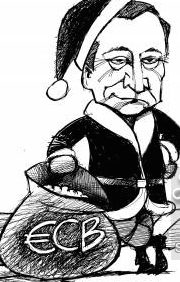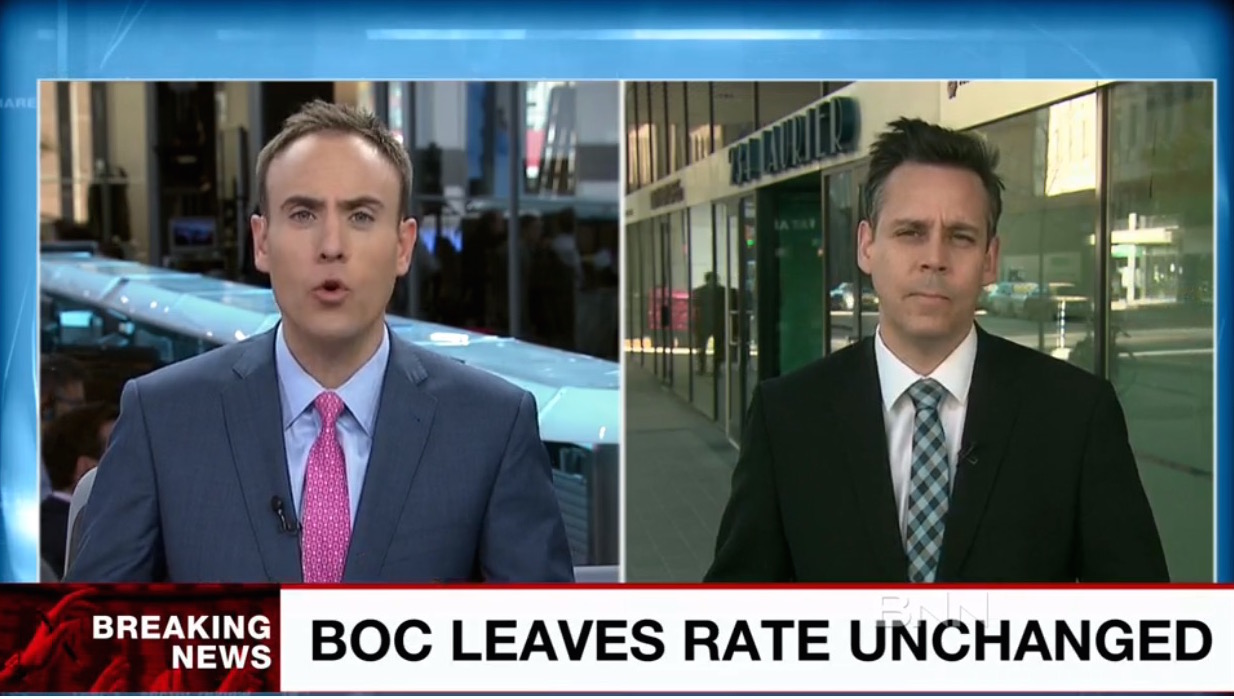ECB: Dovish Hold
The ECB meets tomorrow. Few, if any, are expecting fresh action. The economy has progressed broadly along the lines that ECB anticipated. Growth is stable near trend levels. While deflationary pressures have eased, price increases remain minimal. At 0.4% year-over-year, eurozone CPI, officials cannot be content with the progress.
Moreover, the latest bank lending survey was disappointing. Credit conditions have weakened for the third consecutive quarter. The Composite Index fell to 12.67 in Q3 from 12.75 in Q2 and off from the 16.4 high in Q2 15. Despite the access to cheap funds via TLTRO II, bank lending to households has slowed from earlier in the year. The growth of loans non-financial businesses also appears to have lost some momentum recently.
If the ECB did not seize upon the window of opportunity last month to provide more support, it most likely would notdo so now. The most likely scenario is that while Draghi may lay some groundwork, any fresh action will likely wait until December when the staff forecasts are updated.
What is difficult for many investors to come to grips with is that Draghi and many other ECB officials, even if not all of them, support the combination of orthodox and unconventional policies, and regard them as effective. That is an important recognition. It means that ideas that the ECB will call an end to its efforts because they are ineffective are probably a non-starter from an intellectual and investment perspective. The issue is not really whether the ECB runs to the exit, but rather what it does next. The lens is not what it ought to do, but what it is likely to do.
Although the talk of tapering ran through the market like pink eye in a grammar school, few truly think that is a realistic scenario now. A Bloomberg survey found 97% of the (50) economists surveyed expected the asset purchases to be extended beyond the soft March 2017 end date. Nearly as many (90%) expect the announcement at the December 8 ECB meeting.
Almost three-quarters of the Bloomberg survey expect the ECB to soften its self-imposed rules to ease the potential securities shortage by increased the issue and issuer limits. This raises questions. If the former limits reflected prudent risk management, what does the dilution of those safeguards mean? How will more concentrated purchases impact the transmission mechanism?
The prohibition against buying securities that have a lower yield than the ECB's minus 40 basis points makes sense. However, given the size and duration of the purchases, it also would make sense to maintain that floor not for individual securities but forthe average purchase. This too eases the potential shortage of securities. Also, it would preserve the sanctity of the capital key
To be sure, these decisions are for December,not tomorrow. Tomorrow, Draghi can lay the groundwork by saying three things. First, he will likely anchor discussions of the trajectory of policy to inflation and the legal need to work toward its mandate. Second, Draghi will likely emphasize the ECB's flexibility and the numerous tools it within that mandate. Thirds, he will likely stress that there are no technical constraints that cannot be overcome.
In December, we expect the ECB to extend asset purchases for another six months and suspect that it may begin slowing its purchases (tapering ) in H2 17. There seems to be little appetite to take the deposit rate into the deepernegative territory.
Another consideration that seems to be noticeable by its absence in discussions about the ECB's course is the tightening bias that has emerged through the exchange rate since the end of H1. From the UK referendum through last week, the euro appreciated 5% on a broad trade-weighted basis. This is roughly tantamount to 50-75 bp of tightening. The euro has pulled back over the past week, but it remains near levels not seen since early-2015. In some ways, the more sterling depreciates, the more that the euro needs to weaken against the dollar to cushion the impact.
The euro has fallen nearly 2.4% against the dollar this month after rising 0.7% last month. It has risen 2.8% against sterling. The euro has risen by more than 12% against sterling since the UK referendum, and October may be the fifth consecutive month of appreciation. The last such streak was from August 2012 through February 2013 when the euro's appreciated for seven consecutive months.
The euro's uptrend against the US dollar off the January lows (and through the June and July lows) was violated in the middle of last week near $1.1040. That area now serves as resistance. Today the euro eased to its lowest level since the late-July low near $1.0950. The spike low in the immediate response to the UK referendum results was nearer $1.0915. A break of that could spur a move toward $1.0800-$1.0820.
Incidentally, IF the euro goes to $1.08 and recovers to GBP0.9000, that puts cable at $1.20. If my longer-term view of the euro is accurate (return toward record lows), as big as that if may be, it would likely put cable below $1.00.
![]()
This post was originally published by Marc Chandler at his blog, marctomarket.com
Copyright © Marc Chandler
























